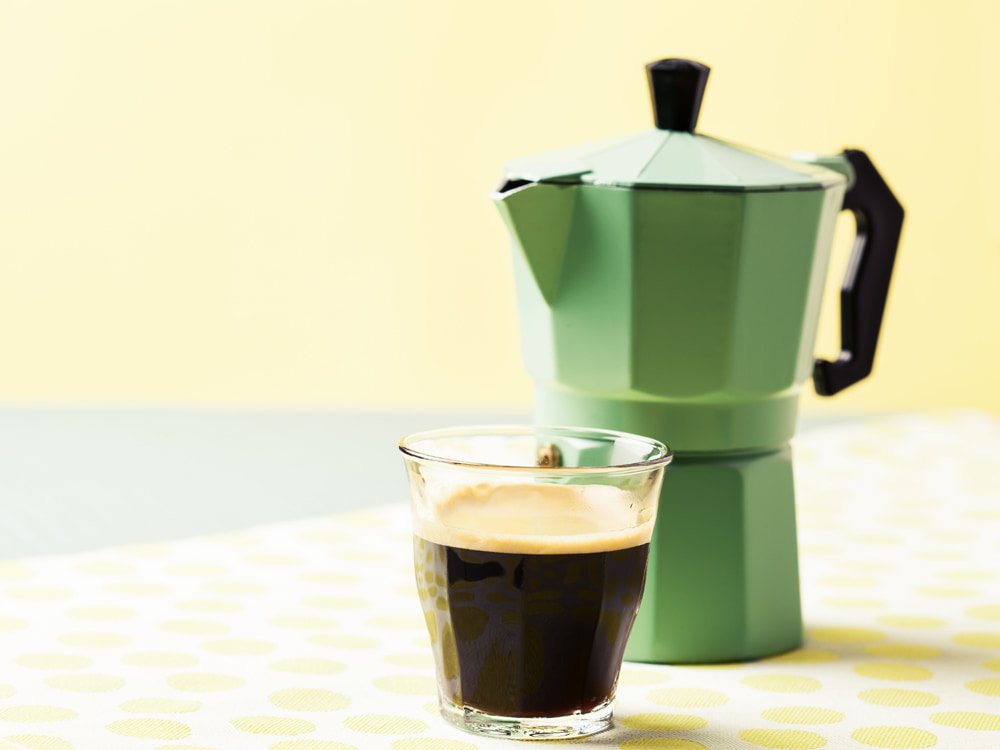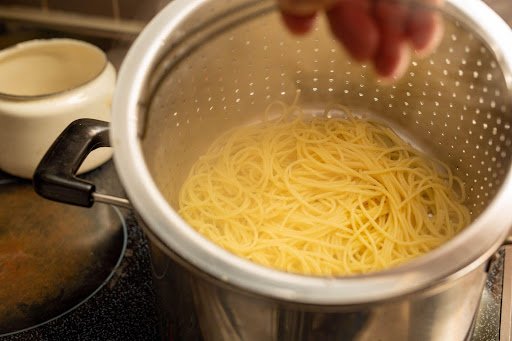
Hot Pot consists of a vessel, or pot, of broth simmering over a burner that is placed centrally on a table, typically surrounded and within reach of a group of people to cook and eat together. Other components of this oriental cuisine includes chopsticks, a strainer, and various raw ingredients.
Hot Pot ingredients typically include meat and vegetables—along with complimentary seasoning and sauces—to be cooked socially and consumed after cooking at the same table.
Recommended Hot Pots

Electric Hot Pot, 1.5L, Non-Stick
If you are looking for a small and handy hot pot that you could use to cook a quick and delightful meal, this electric Hot Pot is perfectly sized.

Electric Hot Pot, 4L, Removable Pot
Simmer, stir-fry, steam, and slow-cook your epic hot pot meals in this 4L sized removable pot hot-pot.
Hot pots are a wonderful way to create a social eating event to be shared with friends and family. It is an intimate gathering people use to catch up on life and spend time with each other.
While several things go into creating it, the effort is always worth it, and much of the preparation doesn’t require a great deal of time when compared to an actual meal. Plus, it’s more fun.
What is a Hot Pot?
Many people consider it a type of Asian fondue where everyone around a table prepares their own food using a shared pot filled with steaming broth. Hot pots are not typically for individual consumption. They are best enjoyed in the company of friends talking and sharing about their day while cooking food.
Hot Pot Etiquette

There are several unspoken social norms when it comes to enjoying a hotpot. Since several people surround the table, everyone using the same hotpot, here are some things to consider:
1. Washing Chopsticks
While it is common to forget about an item you put in a Chinese hot pot, don’t attempt to rescue it by swishing a chopstick used for eating in the broth. Instead, use a strainer to try to track it down.
2. The Floater
This is always one item that floats to the top awaiting to be eaten. Whatever you put into the pot, make sure you consume it. If you are unsure, ask.
3. Do Not Double Broth
The concept is the same as double-dipping. Having multiple broths available is great. However, don’t place your food in two broths. If someone has an allergy or dietary restriction or dislikes spicy food, you are being inconsiderate by contaminating the broths. Always begin cooking in one broth only.
4. House Rules Sometimes Trump Etiquette.
Some people are so comfortable with each other that they don’t care about double-dipping, floating meat, or anything else. It’s all about friends and family.
Be considerate to those that do to avoid someone taking offense. If you’re unsure, follow what most people are doing as cues to what is and what is not acceptable to save the embarrassment of asking and lessen your chances of offending anyone.
How to Make a Hot Pot

Before scheduling a hot pot party, ensure that you have the proper tools. There are several requirements before hosting your own party that doesn’t begin with having the right ingredients.
The hot pot itself consists of placing a simmering pot of broth on a portable burner to keep it hot. Then, place it in the middle of the table within reach of your guests.
Tools Required
- Vessel: This is a divided pot constructed from stainless steel for durability. Some pots are still available with the chimney in the center, but they aren’t quite as common.
- Strainer With a Handle Attached: This should be one strainer per person. Since people are dropping their food selections in a pot, everyone will need to keep track of whose food is in what part of the pot. It also prevents food from overcooking and fishing for your meat.
- Chopsticks: Each person should have two pairs. To maintain good hygiene and avoid cross-contamination, use one pair for raw food and the other for eating/handling cooked food.
Experts advise using disposable chopsticks for raw ingredients as you want to avoid mixing them up. There is also less chance of double-dipping and easier clean-up.
What to Put in a Hot Pot?
Many ingredients go into a hot pot, beginning with which broth(s) to incorporate, the sauces, and meat. When making a hot pot, you need to consider what flavor you will be using for a base, as this determines the other notes you add for layering. Sauces for a hot pot always begin with a base, which is usually soy. Then, the flavor profile begins from there.
Broths for Hot Pot Meals

There are many broth options available, and since hot pots are for at least four people, the broth is shared between two broths within a divided pot. It is good practice to keep one-half mild and the other spicy for those that appreciate heat in their meal.
While hot pot restaurants offer customers a packaged soup base, you can make it from scratch at home. The benefit of this is that it will contain less sodium and more natural ingredients. Soups should also be on the blander side, as boiling and simmering with the addition of meat will make the soup more concentrated.
The most basic hot pot broth is chicken with some raw ingredients like vegetables added to the mix. You can also use it to top up soups in the pot after they evaporate.
Sichuan pepper is a hot, aromatic, earthy, and spicy broth. It is the most popular soup for a hot pot. It contains peppercorns, ginger, chilis, scallions, anise, fennel, and cinnamon. The best part about a Szechuan soup is that it beautifully flavors the meat.
Tom Yum is Thai influenced with chili peppers, lemongrass, fish sauce, lime juice, galangal, and lime leaves. The taste is both sour and hot, making it great for flavoring your meat.
Sauces
For a hot pot, each person creates their own dipping sauce using herbs, aromatics, and base sauces with the addition of the broth flavor your veggies, noodles, and meats.
Further flavoring layers include:
- Satay sauce comes from Southeast Asian spices and roasted peanuts. It is a thicker sauce that can be used alone or mixed with other flavorings.
- Sweet chili or chili paste
- Sesame paste (Tahini) pairs well with Hoisin or chili sauces.
- XO sauce contains cured ham and dried seafood to create an interesting taste. It is best used sparingly as the aroma can be very overwhelming.
The sauces that work well with a hot pot include soy sauce which tends to be a prerequisite. It creates the base for the sauce that you are building. Herbs and aromatics like ginger, garlic, scallions, chilis, and cilantro can all be used to flavor your dipping sauce.
You can also use eggs in dipping sauces to generate smoothness and tone down some of the saltiness of the soy.
Meats

When it comes to a hot pot, thin slices of meats are always the star, with one of the essentials being beef, particularly wagyu beef. Always ensure that you have adequate amounts of beef as this tends to be the first meat that you will run out of.
The second most popular is lamb which cooks in under a minute until it is no longer pink.
Chicken is the third most offered meat. Most people love chicken, but hungry guests may get impatient because it takes a bit longer to cook. This is why chicken is not always a crowd-pleaser when it comes to hot pots.
The benefit of a hot pot party is that it is not difficult to locate thinly sliced meat like pork, wagyu beef, or pork belly. You may be able to have it done in your local deli, or you can go to Asian supermarkets. In the freezer aisle, there should be a selection of pre-sliced meats. This cuts down on preparation and cleaning up.
You can also add seafood to a hot pot. When selecting seafood, it is advisable to obtain shrimp as it cooks quickly. The fat in the head and the flavor in the shells enhance the taste of the broth as well. The only downfall is that guests may not want to peel shrimp throughout the meal.
You can also add scallops, cooked mussels, shucked oysters, sliced fish, and squid.
Starches
Vermicelli, chow mien or udon noodles are required for a hot pot and will pick up the soup flavor. It will simmer for a long time and saturate with tastes from vegetables, meats, and seafood creating a wonderful bouquet of flavor.
Ensure people don’t consume vast amounts as the soup may have become extremely oily by the time it has fully cooked.
A low-carb alternative is shirataki or yam noodles. They are available in various shapes and don’t become soggy when immersed in broth/soup. When using this, refrain from removing it too soon. The broth should be absorbed in all the noodle nooks for a full flavor to emerge.
Vegetables

No dinner would be complete without offering vegetables as a side dish. These fresh ingredients complement the meat, and those who are vegetarian or vegan will appreciate the gesture.
Vegetables include:
- Tofu/Bean Curd. This lightens up the meal, and it can absorb the flavor of the broth.
- Mushrooms. These are wonderful for picking up soup flavors.
- Daikon Radish/Turnip. Cut both vegetables into large chunks. They will easily absorb flavors, so you may want to advise guests not to leave them in the hot pot for a long duration. If left too long, they will disintegrate into the broth.
- Leafy Greens. Spinach and watercress take little time to cook. The downside is they pick up the saltiness of the soup, so they shouldn’t be left for a long duration.
- Hardy Greens. Bok choy and Napa cabbage are wonderful due to their thick stems. They can simmer in a hot pot for a longer duration without disintegrating like many other vegetables. They also won’t pick up much of the flavor from the soup, so they won’t absorb a salty taste.
How Hot Does a Crock Pot Get?
While there is no set temperature, the heat from a hot pot is substantial enough to cause burns or at least blisters if touched. Handle it very carefully as it is hot enough to cook meat.
Hot pots are perfect on a hot day surrounded by family and friends. The broths and soups create a delectable aroma of warmth the minute people enter the room. It is sure to get anyone’s mouth salivating the moment they come in.








